Recent Storm Damage Posts
Preventing Storm Damage After Severe Weather
2/1/2024 (Permalink)
This time of year brings many weather-related forms of property damage to the Lancaster area. The recent rain and snowstorms are no exception. To help prevent storm damage to your own home or business, we can’t stress enough the importance of being prepared!
Inspect your property!
Check for structural issues or have a professional take a look. Roof and foundation issues are two big ones to handle immediately. Doing so can save you from a water leak down the road.
Keep the cold air out!
Seal any gaps between your doors and windows to help keep the moisture out. This will also help with your electric bill.
Do your chores!
After a snowstorm, shoveling your sidewalk and walkways is a given to help avoid slippery conditions. Removing the snow off your roof is also a good idea after heavy snowfall. As the snow rests on your roof, the weight can potentially cause a roof leak or collapse, particularly if your roof is not up to par. In addition, an ice dam can occur overtime and block where the water needs to drain out properly. These issues can lead to water damage.
Insulate!
Your pipes should be insulated in addition to areas that are more prone to the exposure of moisture or cold air. This includes attics and basements and will help to prevent frozen pipes.
Check your Sump Pump!
Sump pumps can save you from water damage, so it is important to make sure they are running efficiently. But what happens when the power goes out? Install a battery backup for the utmost peace of mind!
Trim Your Trees!
Loose tree limbs or branches should be removed to help eliminate the risk of roof damage during high winds.
These are just a few of the many preventative steps you can take to save your property from storm damage. Should you suffer a loss of any kind, call SERVPRO of Lancaster East and Southern Lancaster County for a free assessment. Our storm damage restoration team will guide you through the process as we get things back on track!
Wind Gusts and Heavy Rain Cause Storm Damage in Lancaster!
1/17/2024 (Permalink)
Lancaster has suffered several major storms in the past couple months. During each of these storm events, SERVPRO of Lancaster East and Southern Lancaster County received dozens of calls to help restore storm-damaged properties. With severe rainfall and wind gusts up to 50 mph, many were left with flooding or structural damage. Downed trees, power lines and water rescues were other hazardous factors that came into play. We would like to thank our local first responders for their efforts during these emergencies!
From sewage backups to busted pipes, our team was on standby to provide storm damage restoration services immediately for the many properties affected. While this process generally remains the same as we utilize our IICRC guidelines, each situation has its own issues and demands. Once the water mitigation of the affected areas is complete, we clean and disinfect those same areas with our anti-microbial and anti-fungal cleaning treatments. We also provide more vigorous cleaning options for sewage and other biohazard events, including a hospital-grade disinfectant.
Our advanced air movers help get the job done when it comes to drying a structure, while our Reconstruction Department can handle the next steps of restoring damaged drywall, insulation, trim, flooring and more! Our tarping and board up services are also only a call away when a tree comes down on your property.
When it comes to storms, we don’t take the damage lightly. SERVPRO of Lancaster East and Southern Lancaster County is always prepared for the worst so that we can respond as soon as a disaster occurs!
Stay Safe This Hurricane Season!
6/29/2023 (Permalink)
Hurricane season has begun, posing the threat of severe storms until the end of November. SERVPRO of Lancaster East and Southern Lancaster County provides 24/7 emergency services for when disasters strike in our local area! We also are part of a nationwide network of franchises who answer the call for help when hurricanes or tornadoes leave a devastating impact on a community.
During hurricane season, it is important to be aware of the risks for your area and to prepare for the worst. Check your local weather alerts and news channels for warnings of severe weather. Before and after a storm occurs, inspect the interior and exterior of your property for signs of structural issues that can lead to water or storm damage in the future.
Evacuation plans and emergency kits are critical during extreme weather circumstances and power outages. If your property is drastically damaged by a storm and you have safely exited the premises, do not re-enter the structure until you are told it is safe to do so by the authorities. Electrical surges, roof collapses and other highly dangerous factors can come into play after a storm has occurred.
After a storm damage event, SERVPRO of Lancaster East and Southern Lancaster County’s restoration professionals are here to help restore any size property to preloss conditions. We are proud to assist the local area with their needs, and we also provide a free Emergency READY Profile to help prepare facilities for when storm, water or fire damage occurs. This assessment includes critical information about a building such as water and gas shut-offs so that business owners can quickly prevent further damage to the structure and lessen the time it takes to get the business running again.
SERVPRO assists local homeowners and business owners with their disaster recovery needs throughout the entire process. We are proud to have the resources, knowledge and expertise to provide these emergency services to the Lancaster area!
Storm a 'Brewin'? SERVPRO is Here to Help!
7/8/2022 (Permalink)
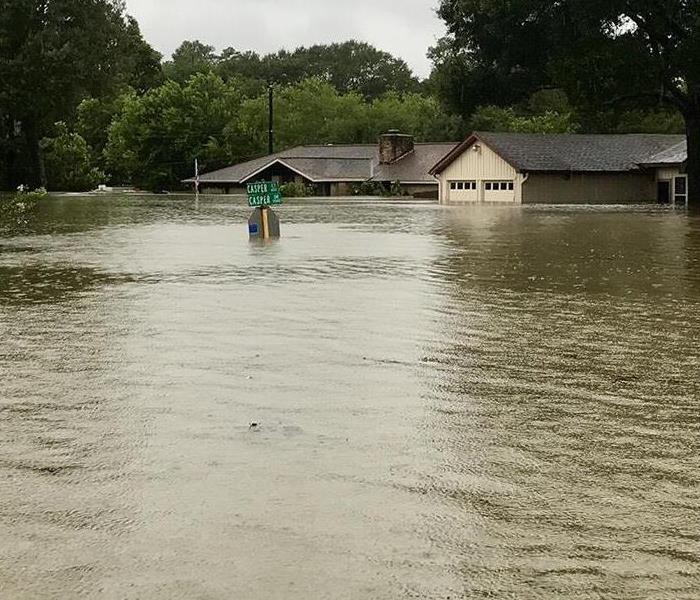 This is an example of a large storm.
This is an example of a large storm.
Although we may be separate Franchise's, when a brutal storm comes through, SERVPRO Franchises come together to tackle the damage.
No matter the size of the disaster, when capacities of a Franchise are compromised the SERVPRO Storm Team works to advise and assist them to provide additional capacity and resources to perform work. When the number of damaged homes is too great for an area, additional resources are deployed.
A Storm event may be a widespread or localized event typically caused by flood, fire, or other natural disaster which creates an increase in call volume that surpasses a Franchise’s capacity to service customers in a timely manner.
The Franchise owner, along with the production managers, crews, and office staff are what make SERVPRO Storm Response work.
Prevent a Flood in Advance- Schedule an ERP!
7/8/2022 (Permalink)
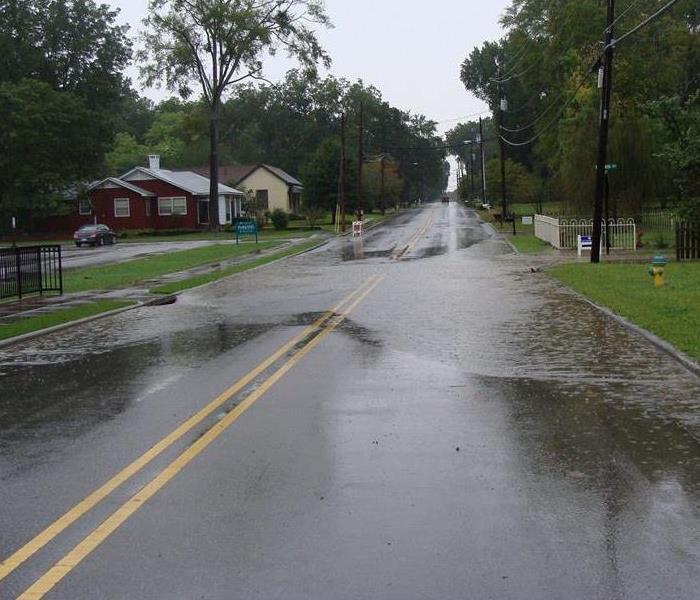 A small local flood.
A small local flood.
There are many steps you can take to help reduce the damage of a potential storm or flood.
First you must determine if your property is in a floodplain or near one. First and foremost, in any emergency, always listen to the instructions given by local emergency management officials.
Carefully assess your surroundings and what you have accessible to you. Then, Make sure you have emergency contacts available, and someone you can count on if need be. It is also always important to review your emergency plans annually. If things change, you should update your plans and inform your family whoever is closest to you. Having an ERP as a homeowner or a business is very important, because it lets US help YOU, and also gives you peace of mind.
Are You Winter Weather Ready?
2/17/2022 (Permalink)
 When winter weather strikes, call the professionals at SERVPRO of Lancaster East to strike back and help make it "Like it never even happened."
When winter weather strikes, call the professionals at SERVPRO of Lancaster East to strike back and help make it "Like it never even happened."
Are you prepared for the upcoming cold weather? Cold weather can have a huge impact on your home or business if you are not ready for it. From heavy rain and freezing temperatures to damaging winds, sleet, or snow, all can cause serious and costly property damage. While you cannot control the weather, you can take steps to be prepared and help take the sting out of winter weather. To help prevent costly damages due to weather, consider taking the following precautions to protect your property before cold weather hits.
- Check your business property for downed limbs and branches. Wind, heavy rain, ice, and snow can all cause branches to fall, which could cause damage to the property and potentially cause personal injuries.
- Roofs, water pipes, and gutters should all be inspected to help ensure they are in proper order. Gutter downspouts should be directed away from your building. Clear gutters of debris that may be gathered during the fall. Leaves and other obstructions can cause a damming effect, which can lead to roof damage and interior water problems.
- Inspect property, especially walkways and parking lots, for proper drainage to alleviate a potential flood hazard.
- Inspect all handrails, stairwells, and entry ways to address and correct potential slippery or hazardous areas. Install mats or non-slip surfaces and post caution signs where water could be present.
- Protect water pipes from freezing simply allowing water to drip when temperatures dip below freezing. If pipes are under a cabinet, leave the cabinet doors open, allowing warm inside air to circulate around the pipes. If the building has outdoor faucets, considering shutting water off at the main valve in the basement of crawl space. Once the valve is off, open the outdoor faucet to ensure it drains, preventing any remaining water from freezing in the pipe.
- Ask the professionals at SERVPRO of Lancaster East about completing an Emergency READY Profile (ERP) for your business. The ERP is a no-cost assessment of your facility and provides you with a plan to get back in business faster following a disaster. Preparation is the key to making it through any size disaster, whether it is a small water leak, a large fire, or an area flood. The best time to plan for such events is not when the event happens, but well beforehand. No one ever plans on a disaster, but now, you can plan and prepare for it.
Hurricane Hazards
2/17/2022 (Permalink)
 Globally, September is the most active month for hurricanes.
Globally, September is the most active month for hurricanes.
Hurricane season has already begun and several named storms have developed in the Atlantic, Caribbean or Gulf of Mexico. For the Atlantic, the season begins June 1 and runs through November 30. On average, there are 12 tropical storms that develop, with an average of six becoming hurricanes, according to the National Weather Service.
Hurricanes can be life-threatening as well as cause serious property damage. The National Weather Service lists the following as potential "hurricane hazards."
- Storm surge is the abnormal rise of water generated by a storm's winds. This hazard is historically the leading cause of hurricane related deaths in the United States. Storm surge and large battering waves can result in large loss of life and cause massive destruction along the coast. Storm surge can travel several miles inland, especially along bays, rivers and estuaries.
- Flooding from heavy rains is the second leading cause of fatalities from land falling tropical cyclones. Widespread torrential rains associated with these storms often cause flooding hundreds of miles inland. This flooding can persist for several days after a storm has dissipated.
- Tornadoes can accompany land falling tropical cyclones. There tornadoes typically occur in rain bands well away from the center of the storm.
- Dangerous waves produced a tropical cyclone's strong winds can pose a significant hazard to coastal residents and mariners. There waves can cause deadly rip currents, significant beach erosion and damage to structures along the coastline, even when the storm is more than 1,000 miles offshore.
Preparation is the best protection against the dangers of a hurricane. Plan an evacuation route and your emergency plan, take inventory of your property and take steps to protect your home or business. For more information on recovering from water damage caused by weather-related disasters, contact SERVPRO of Lancaster East today.
A Winter Storm In Unexpected Territories
2/17/2022 (Permalink)
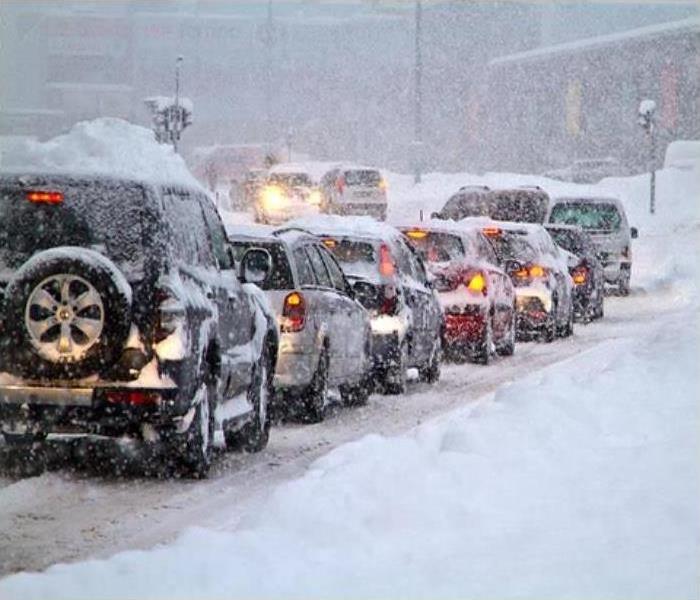 As soon as you call our 24/7 National Call Center or your local franchise directly, we will begin assembling a team and dispatching them to you.
As soon as you call our 24/7 National Call Center or your local franchise directly, we will begin assembling a team and dispatching them to you.
A sprawling winter storm continues to sweep across the country, knocking out power for millions of people as it dumps snow and ice in places where such perilously frigid conditions rent to arrive just once in a generation.
Officials in several states urge residents to stay home, avoiding highways and roads that have become treacherous. Cars and trucks were seen skidding into one another and off the pavement entirely, promoting local law enforcement to respond to hundreds of calls at a time.
In total, roughly 150 million Americans were under some form of winter storm warning over the last few weeks. Snow coated the sand of the Gulf Coast beaches, and enough had fallen in Texas for people to go sledding. In fact, at one point, it was colder in some parts of West Texas than it was in Alaska!
Sustaining storm damage to your home or commercial business can be a complicated endeavor. Not only is structural damage a possibility, but water and electrical damage are too. Working with the right cleanup and restoration company can make all the difference in your recovery process. As storm repercussions continue to get more severe and complex, knowing you are in good hands every step of the way is invaluable-which is why SERVPRO is here to earn your trust.
So why should you count on SERVPRO to handle your storm damage? We are active in your community and in our industry. SERVPRO has been helping communities recover from disasters, both large and small, for many years and we are proud of the reputation we have built as an industry leader. Secondly, we have the expandable resources to handle any size disaster. No matter how much of an area is impacted by a water, fire, or storm event, you can count on SERVPRO to help get your property back to its preloss condition. Because we have a national network of franchises, we can call for backup when needed to ensure we can scale our resources with exceptional service. Lastly, we will respond to you quickly anytime day or night, 365 days a year. We understand how devastating it is to discover damage to your property, which is why we guarantee a prompt response no matter when you need us.
Preparedness For Pets
11/3/2021 (Permalink)
 After hurricanes, thousands of animals are rescued and many are not reunited with their owners.
After hurricanes, thousands of animals are rescued and many are not reunited with their owners.
Pets are just as important as any family member to most people, so why would you not make them part of your preparedness planning? There are several things you can do to make sure they can stay safe as well during an emergency.
Pet Emergency Kit
Ready.gov/animals lists the below items as essential to building your Pet Emergency Kit.
- Food. At least a three day supply in an airtight, waterproof container.
- Water. At least three days of water specifically for your pets.
- Medicines and medical records.
- Important documents. Registration information, adoption papers and vaccination documents. Talk to your veterinarian about microchipping and enrolling your pet in a recovery database.
- First aid kit. Cotton bandage rolls, bandage tape and scissors; antibiotic ointment; flea and tick prevention; latex gloves, isopropyl alcohol and saline solution. Including a pet first aid refence book is a good idea too.
- Collar or harness with ID tag, rabies tag and a leash.
- Crate or pet carrier. Have a sturdy, safe crate or carrier in case you need to evacuate. The carrier should be large enough for your pet to stand, turn around and lie down.
- Sanitation. Pet litter and litter box if appropriate, newspapers, paper towels, plastic trash bags and household chlorine bleach.
- A picture of you and your pet together. If you become separated, a picture of you and your pet together will help you document ownership and allow others to assist you. Add species, breed, age, sex, color and distinguishing characteristics.
- Familiar items. Familiar items, such as treats, toys and bedding can help reduce stress for your pet.
Evacuations
While practicing fire escape or evacuation plans, be sure to include pets. If an evacuation happens, don't leave pets behind as they can be lost or injured.
Identification
Microchipping pets is a great way to locate them. Most veterinary clinics and shelters have scanners that will read the microchip information to help find a pet's owners.
Be sure to take four-legged friends into consideration when planning for emergencies. Visit ready.gov/animals for further tips and safety precautions to think about for you or your insured's family pets, or your tenant's pets during a disaster.
Carbon Monoxide: A Silent Cold Weather Killer
8/1/2019 (Permalink)
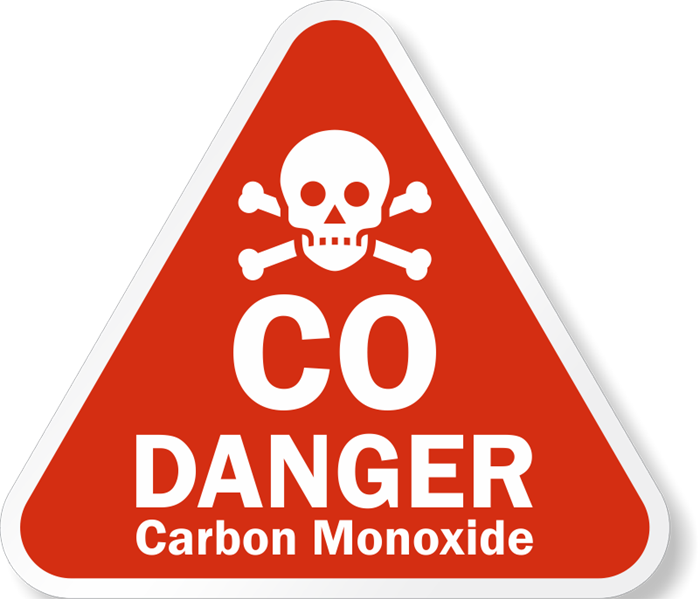 Symptoms:
-Dull headache
-Weakness
-Dizziness
-Nausea/Vomiting
-Shortness of Breath
-Confusion
-Blurred Vision
-Loss of Consciousness
Symptoms:
-Dull headache
-Weakness
-Dizziness
-Nausea/Vomiting
-Shortness of Breath
-Confusion
-Blurred Vision
-Loss of Consciousness
You can't see or smell carbon monoxide, but at high levels, it can kill a person in minutes. Often called the silent killer, carbon monoxide (or CO) is an invisible, odorless, colorless gas created when fuels, like gasoline, wood, coal, natural gas, and propane burn incompletely. According to the Center for Disease Control and Prevention, each year more than 400 American die from unintentional CO poisoning. It is estimated another 20,000 visit the emergency room, and more than 4,000 are hospitalized due to CO poisoning. All people and animals are at risk for CO poisoning, with some groups-including unborn babies, infants and people with chronic heart disease, anemia, or respiratory problems-being more susceptible to the effects of carbon monoxide.
An excess of CO, leading to CO poisoning, can result from faulty furnaces or other heating appliances, portable generators, water heaters, clothes drying or idling cars left running in garages. Taking some basic, precautionary steps can help eliminate the risk or carbon monoxide poisoning. Protect yourself by reviewing the following tips provided by the United States Fire Administration.
- Have fuel-burning appliances, like oil and gas furnaces, gas or kerosene heaters, fireplaces and wood stoves inspected by a trained professional every year.
- Open the damper for proper ventilation before using a fireplace. Never use your oven or stove top to heat your home.
- Make sure all fuel-burning equipment is vented to the outside to avoid CO poisoning. Keep the venting for exhaust clear and unblocked.
- If you need to warm a vehicle, remove it from the garage immediately after starting it. Never run a vehicle or other fueling engine or motor indoors, even if garage doors are open. Make sure the exhaust pipe of a running vehicle is not blocked with snow, ice, or other materials.
- Make sure vents for the dryer, furnace, stove, and fireplace are clear of snow and other debris.
- Only us barbecue grills outside, away from all doors, windows, vents, and other building openings. Some grills can produce CO gas. Never use grills inside the home or garage, even if the doors are open.
- Use portable generators outdoors in well-ventilated areas away from all doors, windows, vents, and other building openings to prevent exhaust fumes from entering the home.
Be Alert with A Weather Radio
7/1/2019 (Permalink)
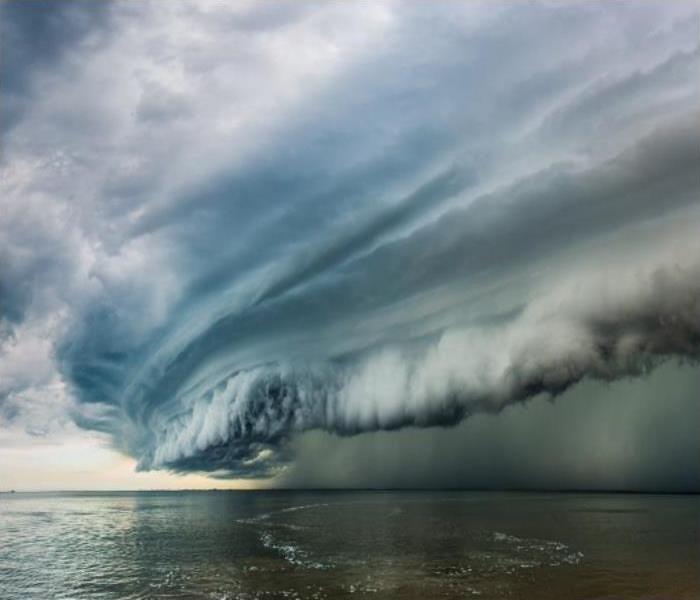 Learn about Wireless Emergency Alerts at www.ctia.org/wea.
Learn about Wireless Emergency Alerts at www.ctia.org/wea.
One of the best precautions you can take is to purchase a good quality weather radio. A weather radio is designed to alert you to dangerous tornado situations, such as an approaching tornado. It allows you to be warned ahead of the approaching storms providing you time to seek shelter. A weather radio is the most reliable source for weather alerts.
Weather radios have made many advancements over the years and are very affordable. Most basic weather radios average around $30 and can be programmed to only alert you for weather alerts you choose.
When shopping for a weather radio, look for the following key features.
- Review-able alerts (you can scroll through alerts and turn off the siren for alerts you do not wish to hear).
- Specific Area Message Encoding (SAME) alert programming (alerts when specific counties are threatened, ensuring you only receive alerts for your county).
- Ease of programming.
If you need help programming your weather radio, you can always contact your local National Weather Service Office for additional information, including county codes for your state, visit the NOAA Weather Radio website at www.nsw.noaa.gov/nwr.
Be Flood Smart
3/1/2019 (Permalink)
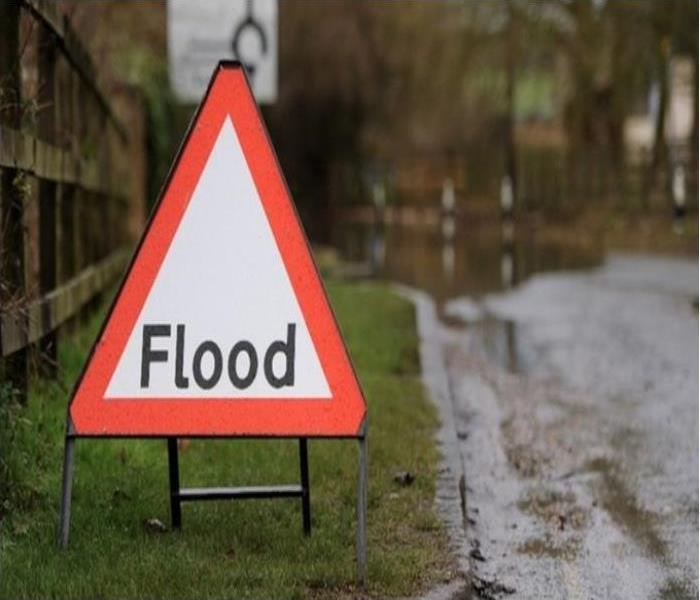 Check out FEMA's Flood Map Service Center by visiting msc.fema.gov to locate properties at risk on a visual flood map.
Check out FEMA's Flood Map Service Center by visiting msc.fema.gov to locate properties at risk on a visual flood map.
Floods are one of the most common and widespread natural disasters in the United States. Whether your home or business is near a coastline, along city streets, in the mountains, near a river or even in the desert-there is always potential for flood damage. Floodsmart.gov reports, in the last five years, all 50 states have experiences floods or flash floods.
According to the American Red Cross (ARC), floods cause more damage in the U.S. every year than any other weather-related disaster. The ARC offers the following flood safety tips.
- Stay away from floodwaters. If you come up on a flowing stream where water is above your ankles, stop, turn around and go another way. Six inches of swiftly moving water can sweep you off your feet.
- If you approach a flooded road while driving, turn around and go another way. If you are caught on a flooded road and waters are rising rapidly around you, get out of the car quickly and move to higher ground. Most cars can be swept away by less than two feet of moving water.
- Keep children out of the water. They are curious and often lack judgment about running water or contaminated water.
If a flood does strike your home or business, contact SERVPRO of Southern Lancaster County. Even minor floods have the potential to cause damage to a structure when not treated quickly and properly, and the cleanup is often an overwhelming task. The SERVPRO System is prepared to handle any size disaster. When fire and water take control of your life, your local SERVPRO of Southern Lancaster County Professionals will help you take it back.
If A Disaster Strikes, Will You Be Ready?
9/17/2018 (Permalink)
 Your #1 Trusted Disaster Recovery Team
Your #1 Trusted Disaster Recovery Team
It is important to prepare before a disaster occurs. Consider the following steps to help you better prepare for an emergency situation.
- Sign up for local alerts and warnings, download apps and/or check access for wireless emergency alerts.
- Develop and test emergency communication plans.
- Assemble or update emergency supplies.
- Learn about local hazards and conduct a drill to practice emergency response actions.
- Participate in a preparedness discussion training or class.
- Collect and safeguard critical documents.
- Plan with neighbors to help each other and share resources.
- Document property and obtain appropriate insurance for relevant hazards.
- Make property improvements to reduce potential injury and property damage.
Emergencies can happen anytime to anyone. Take action now to protect yourself and your property.
When disaster strikes, be ready for the worst with the very best: Your trusted, SERVPRO professionals. Our team is faster to any size disaster, making it like it never happened.
FLOODING CAN HAPPEN ANYWHERE
3/21/2017 (Permalink)
According to the National Weather Service (NOAA), “Approximately seventyfive percent of all Presidential disaster declarations are associated with flooding.”
NOAA lists the most common flood hazards in the United States as:
• Flash Flooding
• River Flooding
• Storm Surge and Coastal Inundation from Tropical and Non-Tropical Systems
• Burn Scars/Debris Flows
(Caused by Wildfires)
• Ice/Debris Jams
• Snowmelt
• Dry Wash (Caused by heavy
rainfall in dry areas)
• Dam Breaks/Levee Failure
Just because you haven’t experienced a flood doesn’t mean you won’t in the future. In fact, 20% of all claims paid by the National Flood Insurance Program (NFIP) were for policies in low-risk communities. On average, floods cost $3.5 billion in annual losses in the U.S., and commercial flood claims average more than $75,000 (NFIP).
When catastrophic water damage happens to you, SERVPRO of Lancaster East Professionals can help. They can help you prepare ahead of time with an Emergency Ready Profile® (ERP), or respond to any size disaster to begin cleanup and restoration to get you back in business as soon as possible.
Your local SERVPRO of Lancaster East Professionals are ready to help make it “Like it never even happened.”

 24/7 Emergency Service
24/7 Emergency Service













